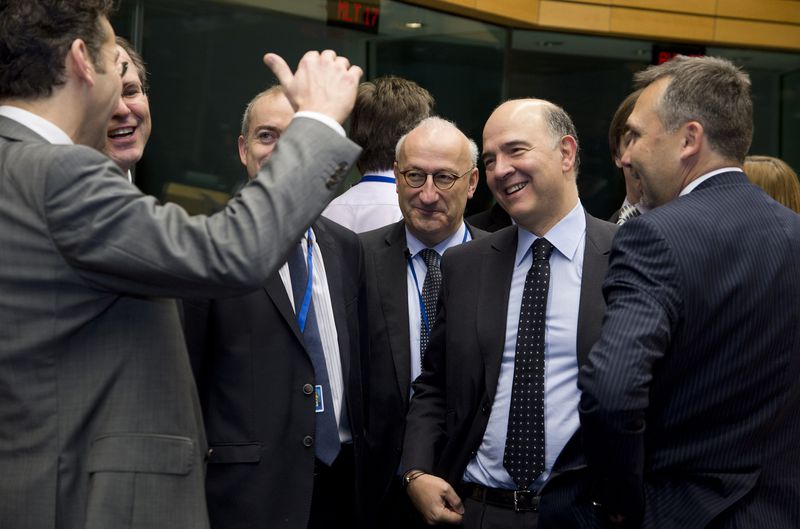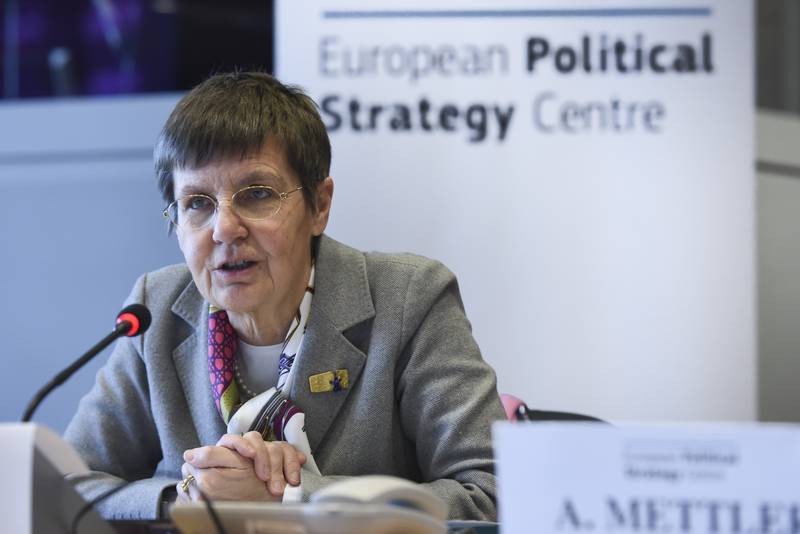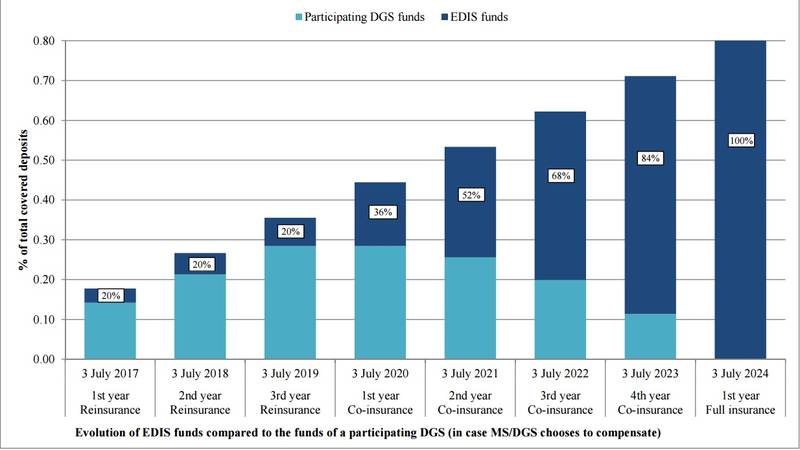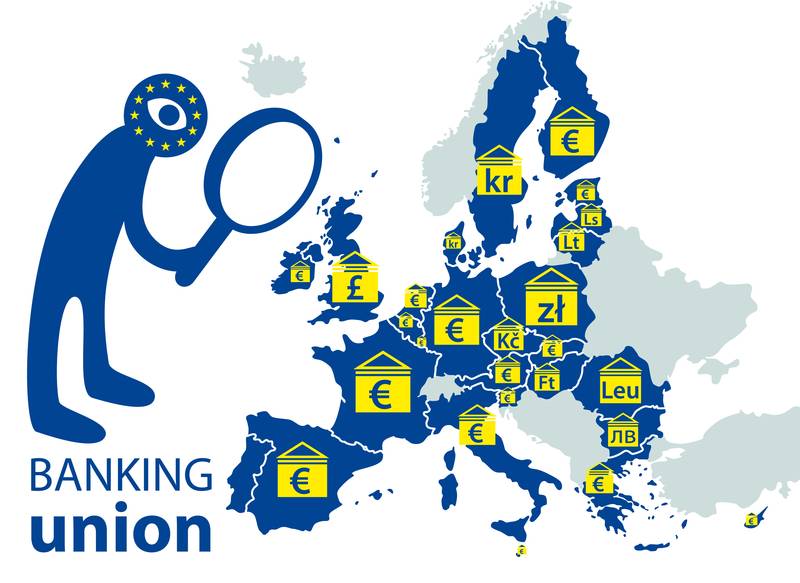Complex, More Complex, SRM
Adelina Marini, December 20, 2013
 If you think the European Union is a piece of cake and that it is not a sufficiently complex organism try the banking union. Or more precisely its second pillar which is the single resolution mechanism (SRM) for wounding up of ailing banks and which the EU finance ministers have finally reached an agreement on quite on time to put it under the Christmas tree of the EU heads of state and government who gathered in Brussels on December 19-20 to recap 2013. There is no doubt that this is the most complicated piece of legislation ever drawn up in the EU and especially in such a short time. As Lithuania's Financial Minister Rimantas Sadzius said, this is a precedent. The agreement on the resolution mechanism for the banks is the fastest. It was adopted even faster than the supervisory mechanism which was, too, agreed precisely for Christmas.
If you think the European Union is a piece of cake and that it is not a sufficiently complex organism try the banking union. Or more precisely its second pillar which is the single resolution mechanism (SRM) for wounding up of ailing banks and which the EU finance ministers have finally reached an agreement on quite on time to put it under the Christmas tree of the EU heads of state and government who gathered in Brussels on December 19-20 to recap 2013. There is no doubt that this is the most complicated piece of legislation ever drawn up in the EU and especially in such a short time. As Lithuania's Financial Minister Rimantas Sadzius said, this is a precedent. The agreement on the resolution mechanism for the banks is the fastest. It was adopted even faster than the supervisory mechanism which was, too, agreed precisely for Christmas.
EU internal market commissioner Michel Barnier defined the agreement as revolutionary and said it was a big day for the banking union. According to him, the new legislation, that is yet to pass a long way until finally approved, introduced a revolutionary change in the European financial sector. In his prepared statement in English it is also said that thanks to the new legislation taxpayers will no longer have to foot the bill of the banks who make mistakes or cause crises. If we set aside the emotional assessments, however, objectively looking what has been agreed on Wednesday evening, unexpectedly early I should say (before midnight), is in fact temporary.
On the one hand, the agreement had to deal with the various levels of readiness of the member states for European integration, especially those who strive for loosening of the Union, namely Britain. On the other hand, however, a truly centralised banking union requires treaty changes which, at this stage, is considered like opening of Pandora's box. It will unleash a process of never ending demands for new changes and will drag the EU into an even more protracted "constitutional" crisis than the one the Union went through in the first decade of the 21st century when it was agreeing the Lisbon Treaty, meant ambitiously to become the European constitution, but ended up significantly less ambitious and integrational. The irony was that this happened right before the eurozone debt crisis unfolded revealing all the flaws in the European construction.
Anyway, now is not the time for treaty changes, but Angela Merkel announced in her first speech in the Bundestag after she was reelected for a third term as chancellor of Germany that this is inevitable. Something Lithuanian finance minister explained without any circumventions - directly and clearly. But, first, about the new Frankenstein that will rescue banks that cause trouble.
A single banking zone
The agreement that has been reached this week consists of two parts. One is an intergovernmental treaty that needs to be ratified by all the eurozone member states to enter into force, and the other is a regulation that is yet to be agreed in a trialogue with the European Commission and the European Council. To put it simply, all that cannot be resolved via the existing European legislation is enshrined in the intergovernmental treaty, while the rest is included in the regulation which is legally based on Article 114 of the EU treaty. This is because, as Mr Sadzius explained, when there are errors in a legislation it is sent to the European court of justice. However, in the case of banks, huge amounts of money could be involved as compensations, which is why all possible legal errors had to be avoided.
That is why, in the intergovernmental treaty is the most essential part of the banking union in general - the resolution fund - which will finance the resolution of troubled banks to avoid the use of public funds as was the case in Ireland, will be the case in Slovenia, as there were single rescue operations in Belgium, The Netherlands, Germany, UK, etc. The fund will be funded with bank levies which, however, the member states will set themselves. These levies will be collected at national level. Gradually, in the course of ten years and more, the national funds, or as they are called in the agreement "compartments", will merge into a common fund. During this ten-year period, the connectivity between the national compartments will gradually increase.
The fund will interfere only after the process of internal recapitalisation (bail-in) has ended with shareholders' money. If that proves insufficient, then come to service the national compartments in the countries where the banks are situated. During the period until the fund is filled, the participation of the national compartments will be decreasing. Of course, due to the fact that not every country can handle a bank which is of systemic importance for the entire EU, it is envisaged during the transition period until the fund has become fully operational the national compartments to be able to lend to each other. It is also envisaged the European Stability Mechanism (the permanent bailout fund of the eurozone) to get involved, which was until recently viewed as a sacred cow by Germany. It is not quite clear under what conditions it will participate, but it is pointed out that it will work under the existing rules. So far, the ESM lent money for a banking system only once - to Spain. The fund will be available only for those countries who participate in the supervisory mechanism and automatically in the resolution mechanism. Those, by  default, are all the euro area members and the non-euro countries can decide if and when they will join the banking union.
default, are all the euro area members and the non-euro countries can decide if and when they will join the banking union.
The draft regulation, which will be subject to community approval, deals with the establishment of a single resolution board which will have broad powers to view cases of troubled banks. This is actually the more complex part of the deal which will probably endure many serious changes during the trialogue with the European Parliament. As you know from previous articles by euinside, one of the most controversial and key issues in the banking union as a whole was who will make the decision that a bank needs a resolution, recovery or bankruptcy. The European Central Bank (ECB), in its capacity as a supervisor, will announce that a bank is failing or that there is a possibility to fail. Then the board, which can make this decision alone, will adopt a resolution plan thus putting the bank into a resolution regime.
The board is the one who will determine how this process will take place and what funds will be involved. This is the body that answers the question everybody were asking until Wednesday - who will make the decision since it is not accepted the European Commission to take this role. Michel Barnier admitted he was not very happy with the outcome, but to him compromise was more important. The ECB's greatest concern, expressed many times this week, including by governor Mario Draghi and his deputy Vitor Constancio, was the speed of decision-making. In the draft regulation it is envisaged the board's decision to be enforced within 24 hours unless the Council, via a simple majority and under Commission's proposal, reject it or demand changes. This is the so called reversed voting system.
This so powerful board will consist of an executive director, four members and of representatives of the national resolution authorities of the participating countries. It will implement its functions in a plenary and executive format. Plenary means that in the decision-making process will be involved also the representatives of the national authorities, while the executive mode envisages work only with the four members and the executive director. In the plenary format will be taken decisions for amounts that exceed 20% of the fund's capital, as well as decisions for recapitalisation exceeding 10% of the money in the fund. In such cases the decisions will be taken via a complicated voting system - a two thirds majority of the members of the board, but representing half of the contributions. In the plenary format, a simple majority will be enough to object decisions taken by the executive format empowering the fund to borrow money. What is interesting is that the plenary format will be able to stop decisions for mutualisation (common financial measures) when it comes to resolution of a group of institutions in a combination of SRM member states and countries outside it.
At first reading, the agreement leaves the impression that too much is left in national hands which could undermine the confidence in the single resolution mechanism. An attempt is made to avoid such impression with a guarantee that bans decisions whereby extraordinary public assistance is used without prior approval through the relevant budgetary procedures. This means, however, that if there is sufficient majority in parliament such an assistance of taxpayers' money could easily be approved. This was the biggest concern of MEPs in the economic committee and also of some finance minsters, like Sweden's Anders Borg.
It is planned the new mechanism to enter into force on January 1st 2015 and its bail-in and resolution functions to start applying from January 1st 2016. This is also a huge compromise because there were countries who insisted these two functions to be applicable as of 2018, like Poland and Greece. While Denmark insisted that they are applicable from day one. In any case, though, these provisions will not be enforced unless the intergovernmental treaty is ratified by the countries that participate in the supervisory and resolution mechanism, representing 80 per cent of the contributions in the resolution fund.
A Frankenstein with a limited mandate
As mentioned in the beginning, this complicated structure is temporary. How temporary, though, depends on when will the decision to open the treaties for revision be taken. According to Rimantas Sadzius, the finance minister of the Lithuanian presidency, if there were to be such changes it is not excluded that the outcome is some "interesting" formations whereby not all the 28 member states will participate but only some of them. This statement is quite broadly open for interpretations. As it looks, the banking union will practically represent a very integrated and strong euro area which is more and more detaching itself from the non-euro countries. With possible treaty changes it is envisaged this integration to deepen even further, as is mentioned in detail in the four presidents' road map and  especially in Jose Manuel Barroso's blueprint. But the most important question is under what terms this integration will take place.
especially in Jose Manuel Barroso's blueprint. But the most important question is under what terms this integration will take place.
Judging by the already expressed visions by Germany no longer will be tolerated countries that do not care about the others in terms of risk spillovers and therefore taxpayers' money. So, it can safely be predicted that the treaties will be opened when there is readiness in the EU to begin a really deep integration with no compromise with quality to avoid crises like the current one that left the EU and the eurozone in particular in recession for years and with huge unemployment. Moreover, this crisis put to the test one of the fundamentals of the European integration - the single currency. And, in fact, Angela Merkel said precisely this in the Bundestag on December 18th, that the opening of the treaties should eliminate all the mistakes and omissions in the past 20 years.
This means that Bulgaria needs to urgently start considering, if possible out loud, whether it is not one of these mistakes. This will give the country a better idea what it could expect in a possible opening of the treaties to be able to prepare better. Otherwise, it is not unrealistic to suggest that Bulgaria could remain outside this more "interesting" formation that could loom up, in Rimantas Sadzius's words. Because he said it bluntly - this is just the beginning. The banking union will be subject to further change.
 Elke Koenig | © European Commission
Elke Koenig | © European Commission | © European Commission
| © European Commission | © European Parliament
| © European Parliament